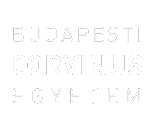Illés, Dorina Erzsébet (2020) Collaboration Marketing in the International Fashion Industry : How the market readies itself for the next generation of luxury. BA/BSc szakdolgozat, BCE, International Study Programs. Szabadon elérhető változat / Unrestricted version: http://publikaciok.lib.uni-corvinus.hu/publikus/szd/Illes_Dorina_Erzsebet.pdf
|
PDF
- Requires a PDF viewer such as GSview, Xpdf or Adobe Acrobat Reader
615kB |
Szabadon elérhető változat: http://publikaciok.lib.uni-corvinus.hu/publikus/szd/Illes_Dorina_Erzsebet.pdf
Absztrakt (kivonat)
1. THE AIM OF THE RESEARCH The chosen topic of my thesis work is the latest phenomenon of collaboration marketing within the international fashion industry. Through the presentation of this recently developed marketing strategy, I aim to analyze and showcase how it enables luxury fashion brands to establish a bridge of direct and effective communication with the emerging target group of the millennial generation (referring to people having reached adulthood in the beginning of the 21st century, people born between 1980-2000). This innovative and forward-thinking marketing method makes it possible to capture and seamlessly transition the core brand values, vision and identity traits in a way that caters to the changing expectations and unique consumer habits of millennials. While in the past, industry leading companies had a well-defined group of consumers and were able to focus on a niche and elitist group of customers within society, in recent years, they simply do not have the chance to miss out on the opportunity of expanding their market reach via vertical integration and diversification. 2. RESEARCH ORGANIZATION The complex research and data analysis are defined by important subsets, distinguished through the main topics and further scientific support. Starting with establishing a detailed theoretical background, I focused on discussing the historical origins and evolution of the concept of luxury, exploring the latest issues and topics the industry is facing in recent times and providing a comprehensive categorization and comparison between major luxury labels. Other essential parts include the understanding of the principals of marketing luxury goods, the perceived norms of luxury and its influence over purchase intention and the underlying motivation behind conspicuous consumption. Through a complex overview of the luxury sector, I will demonstrate the defining changes in customer demand and generational needs and explain why brands need to constantly adapt their strategies in order to adhere to the new expectations. I will further detail the definition of collaboration marketing and discuss what it means in practice and what are the important guidelines and properties via a comprehensive SWOT analysis. The methodological background and approach part of the thesis work comprises of the presentation and deep analysis of my personal research results. It is based on the responses of a survey conducted online and filled out by 149 participants. In this section, I aim to shed light on how real consumer feedback justifies the findings and conclusions of the previously established theories. More information can be found regarding research design, data gathering tools, the analysis, reliability and content validity. In order to showcase how the research result operates in reality, I continue the study with real-life examples via case studies. I will compare two different cases of brand collaborations, one of which worked out quite successfully, generating significant excess reach and profit for both companies (both in case of Alexander Wang and H&M), and the other one which lacked the proper execution of the concept and failed despite the initial hype and positive expectations (in the case of Neiman Marcus and Target). The analysis of the practical problem will demonstrate how collaboration works differently between various brands, how they can initiate and follow a business structure that does not just generates extra revenue, but also strengthens and improves the long-term brand image of the firm and its positioning on the market. 3. METHODOLOGICAL BACKGROUND During the examination of thesis work, I decided to use and focus on a quantitative statistical method for data analysis. I found this strategy to be best achieved via an online survey consisting of 10 multiple choice questions, in which respondents had the opportunity to express further thoughts and comments regarding their personal views and perceptions I believe that choosing quantitative research as the base of the methodological background is the most effective way to support the theoretical analysis part and to properly explore the complex topic of collaboration marketing in the international fashion industry. Using survey results as numerical input helps achieve generalization and point out direct conclusions and feedback throughout the analysis. I decided to collect and gather data that is easily measurable and clear to draw conclusions from. 4. CONCLUSION AND RESULT OF THE THESIS WORK We are facing an era with a new model of growth as the existing luxury market matures. The dynamics of the market are driven by the cultural diversity of the high-net worth market and the organizations expected to remain successful and thriving in the coming years are the ones that possess a deep understanding of changing consumer needs, the idea of diversity and organizational agility so that they are able to proactively operate in today’s fast paced business environment. Future research is indeed expected to be centered around the proposed concept of collaboration marketing. Although the idea can already be considered as a well-constructed system, there is still room for development and improving the parts where there are no clear guidelines or scientific properties established yet.
| Tétel típus: | BA/BSc szakdolgozat |
|---|---|
| Témakör: | Marketing |
| Azonosító kód: | 14009 |
| Képzés/szak: | Business Administration and Management |
| Elhelyezés dátuma: | 13 Okt 2021 11:21 |
| Utolsó változtatás: | 02 Dec 2021 09:00 |
Csak a repozitórium munkatársainak: tétel módosító lap

